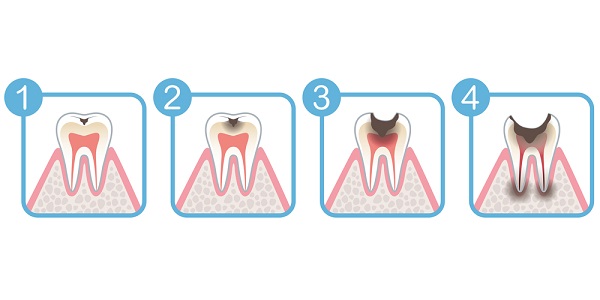
Tooth decay is caused by a bacteria found inside our mouth. The bacteria produce certain acids from the sugar and starch we eat in our meals. These acids then destroy the enamel (outer coating on the teeth), thus exposing the underlying soft bones and tissue to further damage.
To avoid further damage to teeth, it is advisable that individuals meet their dentists as soon as they come across symptoms of tooth decay. These symptoms are as follows:
*Teeth becoming sensitive: Tooth decay exposes the underlying nerve system in our teeth. With no outer protection of any sort, these nerves respond rapidly to changes in temperature. An individual with sensitive teeth, then, feels a sharp pain whenever he/she eats or drinks something cold or hot.
Tooth sensitivity is also exhibited whenever the individual eats something too sweet. Depending upon the extent of tooth decay the pain either subsides in a few minutes or may remain for some period of time.
*Foul smell coming from mouth: The bacteria which causes decay of tooth enamel is also responsible to produce a foul smell inside our mouth. This smell emanates from the mixture of acids produced by the bacteria and the fleshy deposit called plaque that develops between the teeth and between teeth and gums.
*Cavities: Cavities (also called caries) is the most obvious sign of tooth decay. There comes a time when the bacteria are finished with destroying the enamel. The acid they produce then gets down to work upon the soft bone lying underneath. The reaction produced eats away the bone and also forces it to change its color from white to black. Eating away of the bone gets manifested in the form of a depression placed in the middle of the teeth (in the case of molars) or in the form of eating away at the sides (in front incisive and canine teeth).
How to Treat Tooth Decay?
Treating tooth decay is a two-pronged method. In the first step the decay itself is treated. It is then followed by treating the underlying cause- the accumulation of plaque.
*Treating the decay: Tooth decay can be treated with the help of specially formulated amalgamations (which can be either a mercury-based one or a composite resin-based one). This process is also commonly known as tooth filling. This process protects the remaining portion of teeth from getting damaged any further.
*Treating plaque: The only way to treat plaque is by removing it. Especially designed orthodontic equipment is used to dislocate it from in between the teeth. This is then followed by a correction in eating habits, integrated primarily for the purpose of stopping further accumulation of plaque in between the teeth.
